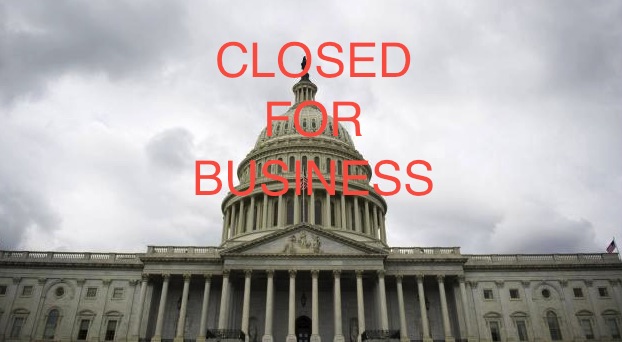On behalf of American Institute of Architects' President Mickey Jacob, the organization issued the following statement on the partial federal government shutdown that began early this morning. Along with its statement, AIA published "Shutdown 101: FAQ" to assist its members during the shutdown.
“The AIA is a non-partisan professional association; we work with members of both political parties. And like most Americans, AIA members are extremely disillusioned with the current state of affairs in the nation’s capital.
“The design and construction industry is slowly recovering from one of the worst economic crises in modern history. The last thing we need is the self-inflicted wound that can potentially further damage the economy.
“We urge both political parties to set aside political divisions and put the “common good” of the American public first. That phrase is an anachronism in today’s political vernacular, but lawmakers ought to commit it to memory in coming weeks as the fight over the budget commences and the deadline to address the debt ceiling arrives.
“We urge the public to ask their Congressional to refocus their debate to responsibly and immediately address the federal budget. Above all, we urge the public not to become politically disengaged. That, in part, is why the AIA has posted a comprehensive set of FAQs on our website as a way to measure the impact of the shut-down and to provide AIA members with an opportunity to make sure their voice is heard.”
About the American Institute of Architects
For over 150 years, members of the American Institute of Architects have worked with each other and their communities to create more valuable, healthy, secure, and sustainable buildings and cityscapes. Members adhere to a code of ethics and professional conduct to ensure the highest standards in professional practice. Embracing their responsibility to serve society, AIA members engage civic and government leaders and the public in helping find needed solutions to pressing issues facing our communities, institutions, nation and world. Visit www.aia.org.
Related Stories
| Mar 2, 2011
Design professionals grow leery of green promises
Legal claims over sustainability promises vs. performance of certified green buildings are beginning to mount—and so are warnings to A/E/P and environmental consulting firms, according to a ZweigWhite report.
| Feb 25, 2011
Procter & Gamble will pursue LEED for all new sites globally
Procter & Gamble will pursue LEED certification for all new sites. P&G's Taicang plant in China - which is breaking ground today - is the first P&G manufacturing site to pursue LEED certification, with several additional new P&G sites currently working toward the same distinction globally.
| Feb 24, 2011
New reports chart path to net-zero-energy commercial buildings
Two new reports from the Zero Energy Commercial Buildings Consortium (CBC) on achieving net-zero-energy use in commercial buildings say that high levels of energy efficiency are the first, largest, and most important step on the way to net-zero.
| Feb 24, 2011
Lending revives stalled projects
An influx of fresh capital into U.S. commercial real estate is bringing some long-stalled development projects back to life and launching new construction of apartments, office buildings and shopping centers, according to a Wall Street Journal article.
| Feb 23, 2011
Green building on the chopping block in House spending measure
Bryan Howard, Legislative Director of the U.S. Green Building Council, blogs about proposed GOP budget cuts that could impact green building in the commercial sector.
| Feb 22, 2011
LEED Volume Program celebrates its 500th certified Pilot Project
More than 500 building projects have certified through the LEED Volume Program since the pilot launched in 2006, according to the U.S. Green Building Council. The LEED Volume Program streamlines the certification process for high-volume property owners and managers, from commercial real estate firms, national retailers and hospitality providers, to local, state and federal governments.
| Feb 15, 2011
New 2030 Challenge to include carbon footprint of building materials and products
Architecture 2030 has just broadened the scope of its 2030 Challenge, issuing an additional challenge regarding the climate impact of building products. The 2030 Challenge for Products aims to reduce the embodied carbon (meaning the carbon emissions equivalent) of building products 50% by 2030.








